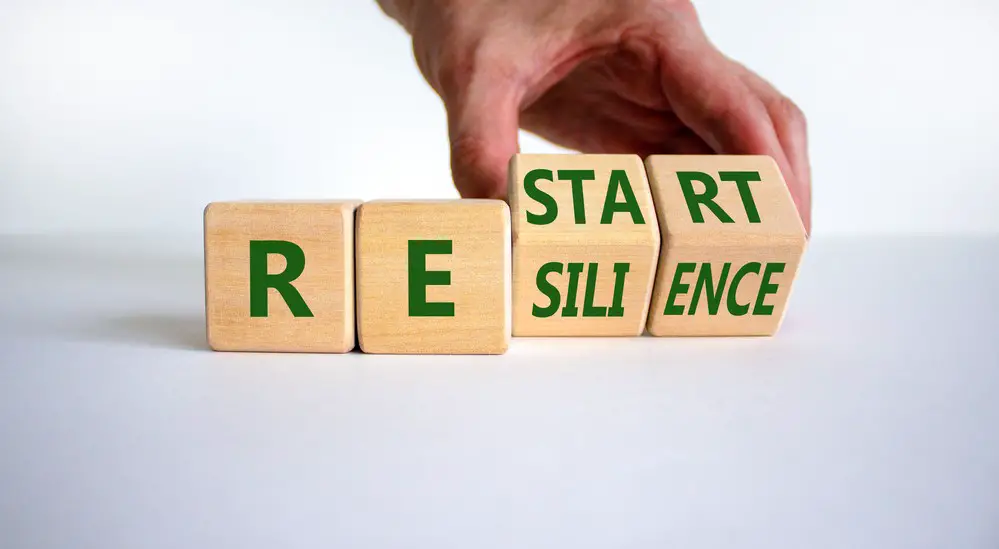As a BetterHelp affiliate, we receive compensation from BetterHelp if you purchase products or services through the links provided
Social resilience is vital to our ability to adapt and recover from challenges in various aspects of life. Individuals and groups can foster and sustain positive relationships and bounce back from stressors and isolation through diverse perspectives and mutual respect. By understanding the concept of social resilience and its multi-level construct, we can better equip ourselves to handle setbacks and adversities.
A strong social support system is a key factor in building resilience, as it helps us cope with and recover from hardships more effectively. Social bonds, networks, and safety nets enable us to manage stress and adversity and contribute to our overall well-being. Social resilience is crucial in helping communities and individuals remain strong and overcome obstacles in times of crisis or difficulty.
To effectively build social resilience, it’s essential to consider the influences of culture, institutions, and family on our ability to adapt and transform. Cultivating positive emotions, practicing empathy, and developing social capital can all contribute to increased social resilience, resulting in a more adaptable and robust response to various challenges, such as the COVID-19 pandemic or climate change.
Key Takeaways
- Social resilience is crucial for adapting and recovering from life’s challenges, relying on strong social connections and support systems.
- Culture, institutions, and family relationships influence our ability to bounce back and cope with adversity.
- Developing social capital, cultivating positive emotions, and practicing empathy can help build resilience in individuals and communities.
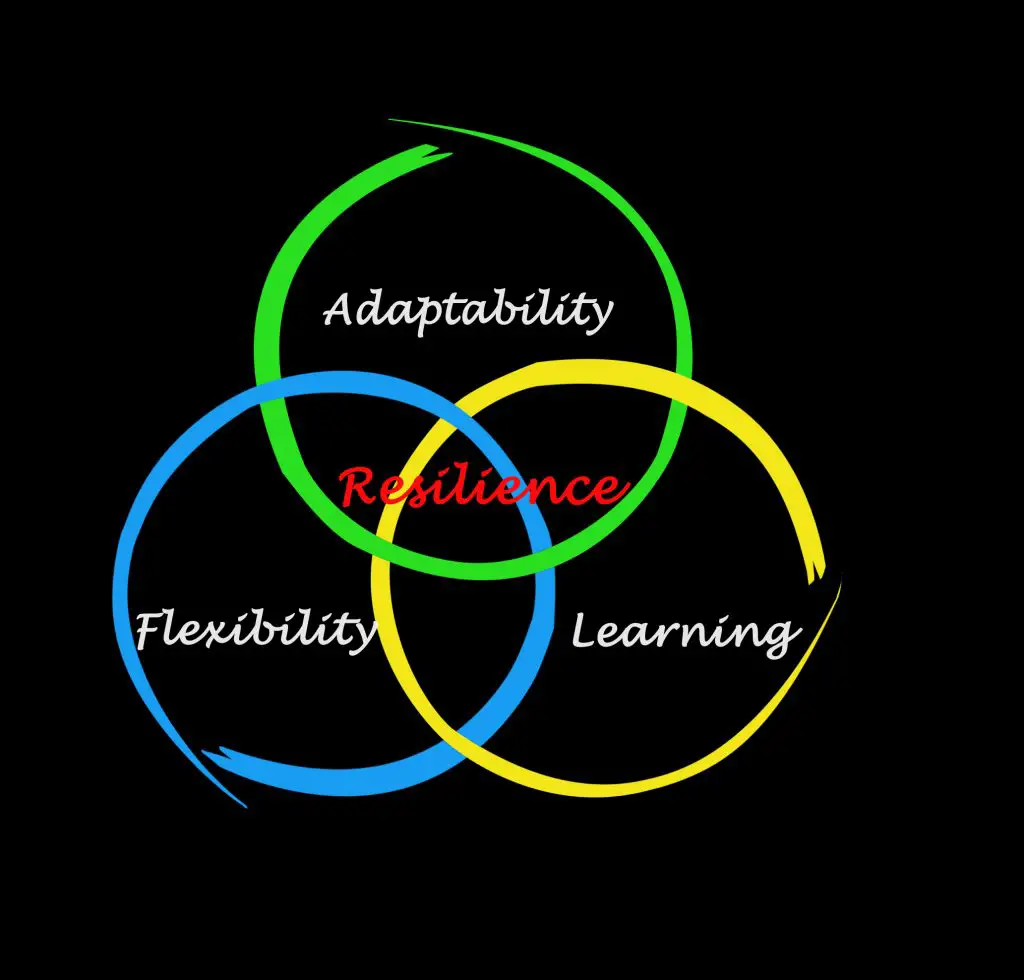
Understanding Resilience
Resilience is your ability to cope with and recover from setbacks, and it plays a crucial role in human success. As you face challenges in life, developing strong coping mechanisms can help you remain calm and persevere through difficult times.
When you’re resilient, you can marshal your available resources, ask for help when needed, and find effective ways to manage your situations. Some key aspects of resilience include mental, emotional, and behavioral flexibility, which allows you to adapt to both external and internal demands.
Understanding resilience isn’t just about bouncing back and learning and growing from your experiences is important. By enhancing your resilience, you’ll not only become more successful at handling setbacks, but you’ll also develop a stronger sense of self.
Here are a few strategies for building resilience:
- Build a strong support network: Surround yourself with positive individuals who uplift and support you. Having good social relationships is key to resiliency, as they can help buffer stress and provide encouragement during tough times.
- Focus on the positives: Maintain a positive mindset and try to see the silver lining in challenging situations. Positive people can acknowledge dangers and threats without being overwhelmed, contributing to better coping skills.
- Develop problem-solving abilities: Practice finding solutions to problems or brainstorming alternative plans to address setbacks. By approaching challenges with a proactive mindset, you’ll be better equipped to navigate through adversity.
- Take care of your physical and mental health: Engage in regular self-care activities, such as exercise, meditation, or pursuing hobbies that bring you joy. Maintaining a healthy lifestyle can improve your resilience and ability to cope with stress.
Remember, building resilience takes time and consistent effort. As you implement these strategies, you’ll notice improvements in your ability to handle setbacks and embrace growth opportunities.
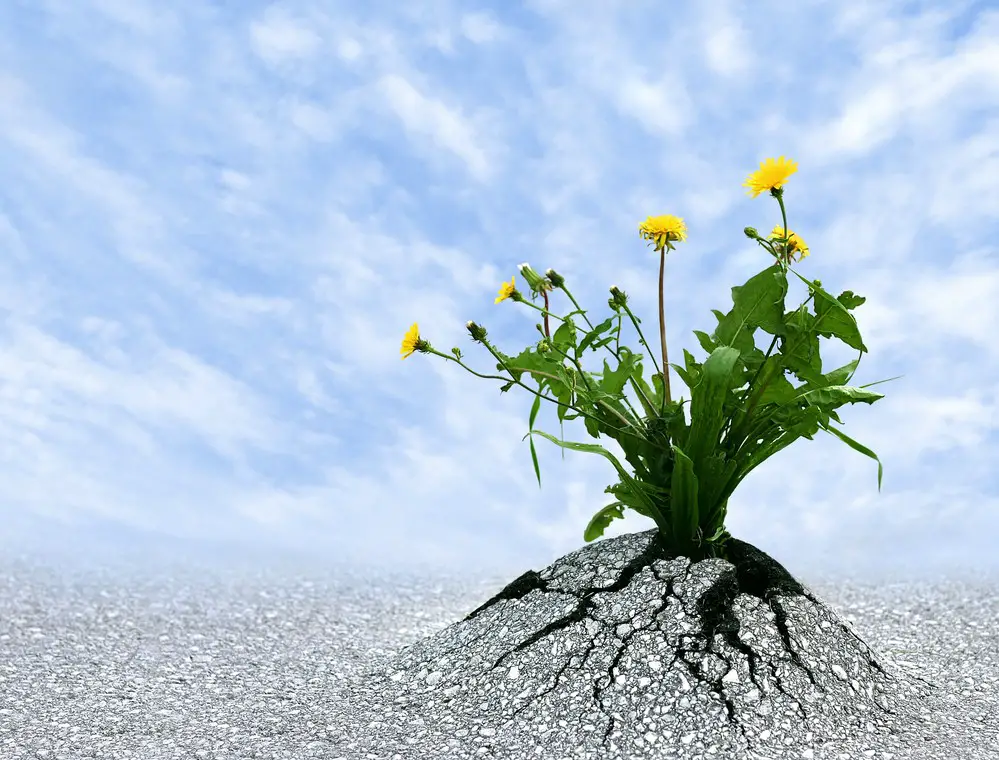
Social Resilience and Communities
Regarding social resilience, it’s essential to understand how communities play a significant role. By working together, people in these tight-knit communities can handle disasters more effectively and bounce back faster from challenging situations.
Know the stakeholders: In building community resilience, it’s crucial to identify key stakeholders, such as local authorities, non-profit organizations, and community leaders. These individuals can provide valuable knowledge and resources to strengthen social resilience.
Trust and cohesion: Trust is the foundation of a resilient community. As you interact with your neighbors, it’s essential to establish and maintain trust, ensuring mutual support during emergencies. Acts of kindness, like offering assistance or sharing resources, help instill cohesion among community members.
- Foster communication among community members
- Encourage events and activities that bring people together
- Support local businesses and organizations
Learning and adaptation: To enhance community resilience, learning from past experiences and adapting accordingly is essential. For instance, if your hometown has been affected by natural disasters, you should:
- Share relevant knowledge with others in the community
- Learn from past events to improve emergency plans
- Take appropriate precautions, such as retrofitting infrastructure or participating in drills
Inclusivity and equity: Everyone’s voice should be heard in a community. Involving all members, including marginalized groups, ‘ll create a more cohesive and resilient community that can better withstand crises.
- Encourage open dialogue and active listening.
- Emphasize the importance of diversity and equity
- Prioritize the needs of vulnerable groups
Don’t forget that strength comes from unity in your efforts to promote social resilience. By working together, your community can better handle challenges and overcome adversity.
Social Resilience and Well-being
Social resilience plays a crucial role in contributing to your overall well-being, including mental and physical health. It helps you remain calm during challenging situations, manage stress effectively, and cope with distress as you age.
By forging strong relationships with others, you build a support network that offers emotional and instrumental help when needed. This sense of relatedness reduces stress levels and fosters positive emotions, leading to a healthier and happier life.
Here’s how social resilience can impact various aspects of your life:
- Health: A well-developed social network provides the emotional and practical support you need to navigate everyday challenges. In turn, this helps to reduce anxiety and improve coping mechanisms, ultimately promoting better health.
- Stress: With a solid foundation of social resilience, you can better manage the stress that life inevitably brings. A robust support system offers reassurance, advice, and companionship, making handling even the most trying situations easier.
- Aging: As you grow older, maintaining social connections becomes increasingly essential for mental health and overall well-being. Social resilience helps you adapt to the changes and challenges that aging presents, fostering a sense of belonging and purpose.
To bolster your social resilience, consider adopting some of these coping strategies:
- Reach out to friends, family, or colleagues for support when faced with challenges.
- Engage in activities that promote positive relationships, such as joining clubs or volunteering.
- Cultivate empathy and compassion by practicing active listening and offering support to others.
- Create a healthy balance between personal boundaries and social connections.
Incorporating these strategies into your daily life can help you develop a more resilient mindset and reinforce your overall well-being. Remember, a little effort in nurturing social resilience can go a long way in safeguarding your mental and emotional health.

Social Resilience in Crises
It’s no secret that crises, whether natural disasters, instances of violence, or conflicts, can devastate communities. But amidst all the hardships, people often band together and tap into their social resilience to overcome these challenges.
Social networks become crucial for survival during natural disasters such as floods, earthquakes, or hurricanes. Your neighbors, friends, and family may provide emotional support, help you access resources, and collaborate to rebuild your community. In short, these critical connections contribute to your social capital, making it easier for individuals and societies to bounce back from adversity.
In times of violence and conflict, social resilience is also key. Displacement, loss of livelihood, and refugee situations are all aspects of crisis that can have lasting impacts. By forging bonds and tapping into local support networks, you can better adapt to your new environment and thrive. Strong social connections and a sense of belonging are vital to maintaining mental health and well-being.
To build social resilience during crises, consider these strategies:
- Stay connected: Keep in touch with your friends, family, and acquaintances; they can be a valuable source of support and information during difficult times.
- Be a good neighbor: Offer help when your neighbors are in need or facing challenges. A helping hand can go a long way in strengthening your community’s resilience.
- Engage in community activities: Participate in local events or organizations to meet new people and establish social connections.
- Be open to change: Embrace new situations and adapt to your environment. Flexibility is essential for overcoming adversity.
Remember, the key takeaway is that social resilience is essential during crises. By fostering strong connections with others, you can form a supportive network that helps everyone endure and overcome the hardships brought on by disasters, violence, or displacement.

Institutional Influence on Social Resilience
Social resilience is all about the ability of a community to adapt and recover from challenges, and institutions play a crucial role in shaping this capacity. This section will explore how institutions influence social resilience by impacting social networks, infrastructure, access to water and electricity, and more.
A key aspect of institutional influence on social resilience is the support and development of social networks. Institutions can foster connections between individuals, communities, and organizations, creating bonds that serve as a safety net during times of crisis. When people know they have reliable sources of support, they’re more likely to bounce back from adversity.
Another important factor is the provision and maintenance of essential infrastructure. Institutions are responsible for ensuring communities access basic resources like water and electricity. These crucial lifelines can make all the difference in a community’s ability to recover from and adapt to challenges. For instance, a community’s vulnerability to drought or other water-related disasters increases dramatically without access to clean water.
In addition to providing critical resources and infrastructure, institutions also serve as sources of stability and guidance in times of crisis. This support comes in various forms, from creating policies that protect vulnerable communities to offering financial assistance during emergencies. When institutions are responsive and adaptive, they can help strengthen a community’s resilience.
However, it’s important to recognize that not all institutional influences are positive. Sometimes, entrenched biases or outdated practices within institutions can hinder resilience-building efforts. Mismanagement or corruption might lead to the inefficient allocation of resources, while a lack of transparency can erode public trust. It’s crucial for institutions to continually self-assess and adapt to ensure they’re fostering resilience rather than undermining it.
In conclusion, institutions play a pivotal role in shaping social resilience. By fostering social networks, ensuring access to essential resources and infrastructure, and providing support in times of crisis, they can help communities face challenges head-on. However, they must remain adaptive and responsive to ensure their influence remains positive. The key takeaway is that, as you engage with and strive to strengthen your community’s social resilience, consider the institutions’ impact and work to build partnerships that foster collaboration and collective resilience.
Key Takeaway: Institutions significantly influence social resilience by fostering social networks, providing essential resources and infrastructure, and offering guidance and support during crises. To ensure their positive impact, institutions must be adaptive, responsive, and supportive of communities in need.
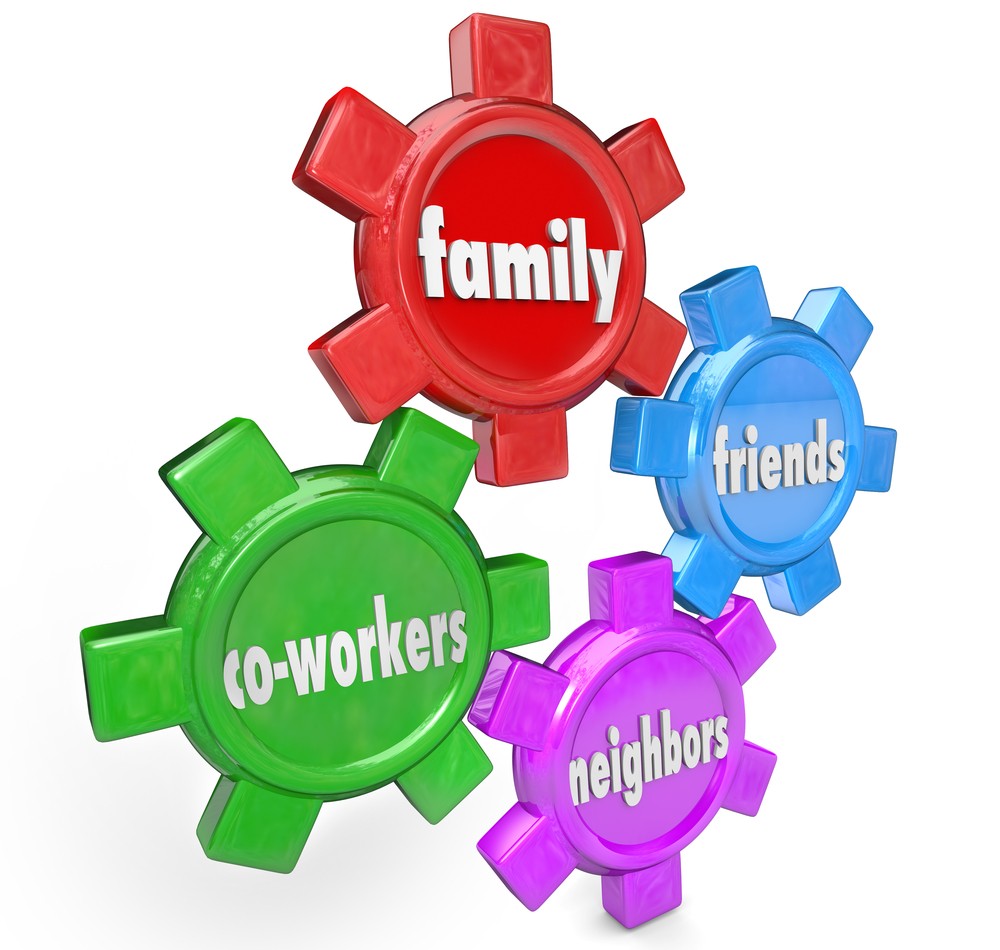
The Role of Family in Social Resilience
Family plays a significant role in fostering social resilience. It’s the nurturing environment where you first learn to build strong relationships and develop trust. In this haven, you experience what it means to connect and rely on others, laying the foundation for resilience in the face of life’s challenges.
In your family, you create bonds and establish trust as a safety net. When difficult situations arise, you know you have a support system to fall back on. This emotional safety net allows you to bounce back when facing adversity. Positive relationships within the family are essential in strengthening resilience, as close connections help you feel secure and confident in your ability to cope.
In addition to emotional support, your family teaches you essential life skills, such as problem-solving, communication, and adaptability. These skills are invaluable in cultivating resilience, enabling you to navigate hurdles easily.
Families also foster a sense of belonging, which contributes to social resilience. Feeling connected and supported within your family gives you the confidence needed to forge relationships outside your home. You become more likely to engage in social activities, make friends, and establish strong ties in your community.
Here are a few ways families can nurture social resilience:
- Encourage open communication and be willing to listen when family members share their feelings
- Foster a culture of trust and support within the home
- Spend quality time together, participating in activities that everyone enjoys
- Offer encouragement and reassurance during difficult times to instill confidence
Always remember that you have the power to strengthen your social resilience by fostering positive relationships within your family. Investing time and energy into these connections will cultivate a supportive environment that helps you withstand life’s challenges. More than any other factor, your family serves as the bedrock of your resilience.
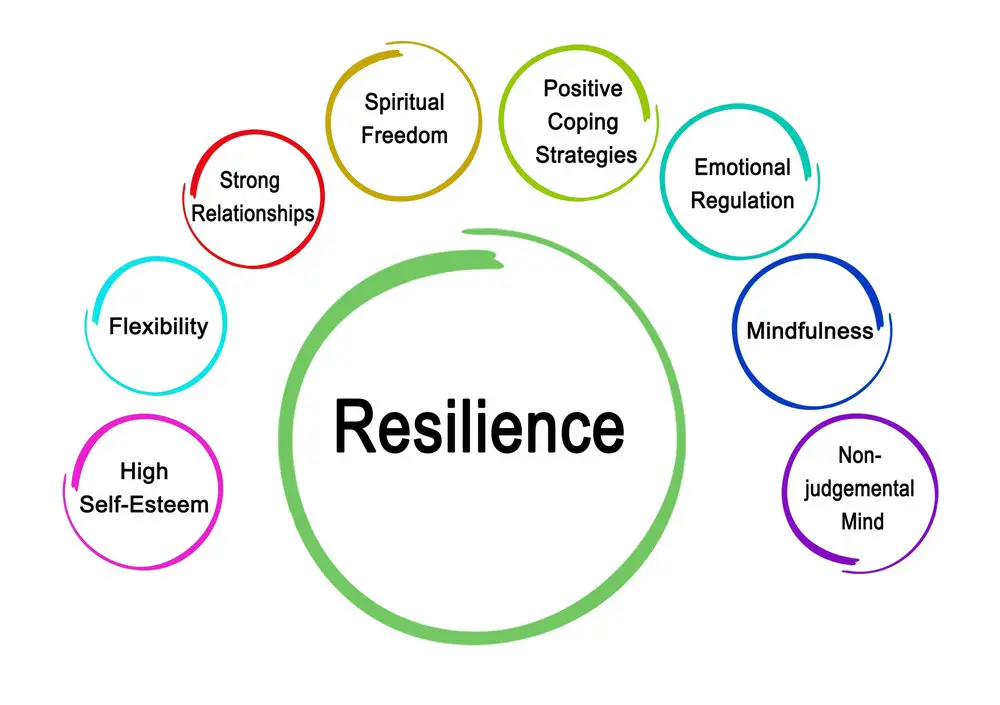
Adaptation and Transformation
Facing setbacks and negative emotions is a part of life, but social resilience helps you bounce back. In this journey, you’ll encounter two essential processes: adaptation and transformation.
Adaptation is all about adjusting to new situations as they arise and being flexible when confronted with distress or anxiety. It’s about learning from your experiences and applying that knowledge to navigate future hardships. Here are some strategies to improve your adaptation skills:
- Reflect on past challenges: Recognize how you’ve coped with similar situations before and identify what worked well or could be improved.
- Embrace change: Accept that change is inevitable and seek opportunities to grow and learn.
Transformation, on the other hand, is about making significant, non-linear changes in your life. This may be necessary when the usual ways of coping aren’t enough to overcome distressing situations or when you find yourself stuck in negative patterns. To foster transformation, consider these tips:
- Identify areas for growth: Think about which aspects of your life could benefit most from a significant change, such as personal habits, relationships, or career choices.
- Seek support: Engage with your social network, join a support group, or seek professional guidance when needed.
By embracing adaptation and transformation, you can handle various experiences and face setbacks. Remember that social resilience isn’t just about enduring hardships and thriving in adversity. So, keep growing, adapting, and transforming because you can do amazing things.
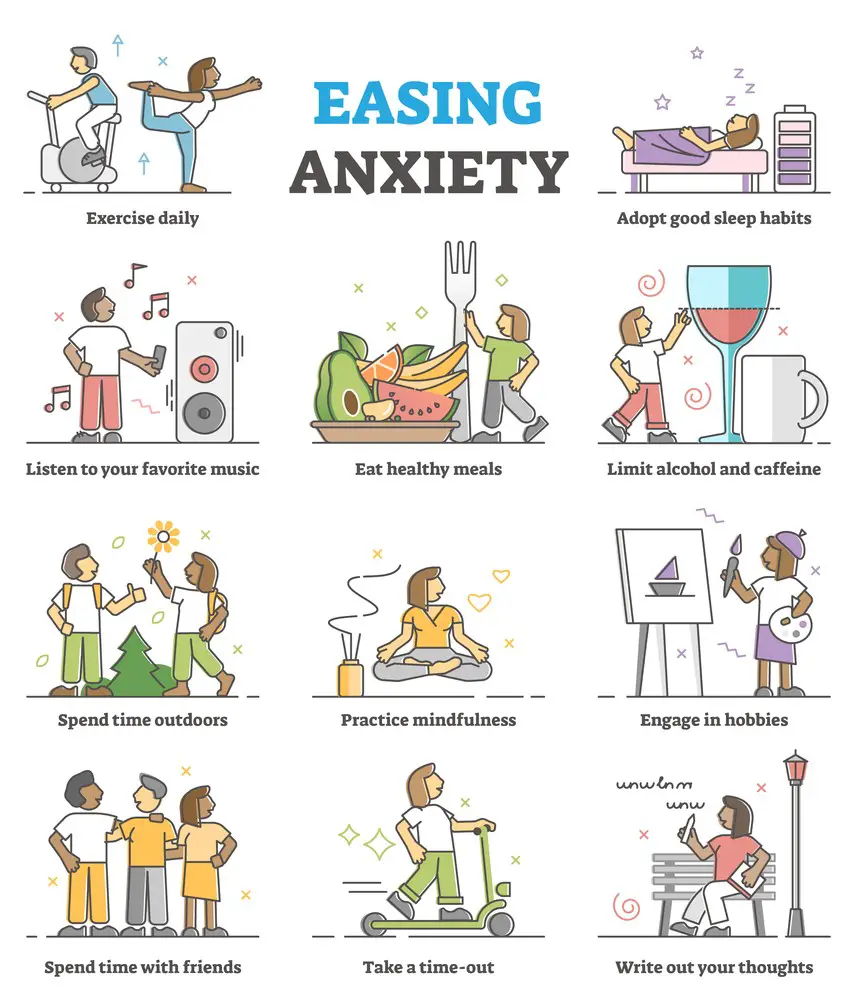
Positive and Negative Emotions
As you explore the concept of social resilience, it’s essential to understand how positive and negative emotions play a role in developing this trait.
Positive emotions like hope, joy, and optimism significantly build resilience. When you experience these emotions, they help you bounce back from adversity more quickly by improving your coping mechanisms. For example, finding positive meaning in negative circumstances can lead to efficient emotion regulation and accelerated recovery from emotional stress. It’s crucial to embrace these positive emotions as they can give you the energy and motivation needed to tackle life’s challenges head-on.
On the other hand, negative emotions such as grief, sadness, and disappointment are also an inevitable part of life. Instead of denying or suppressing these emotions, it’s important to accept and work through them. Dealing with negative emotions strengthens your resilience and prepares you to handle potential setbacks more effectively.
Here are a few tips to help you manage your emotions for developing resilience:
- Practice gratitude: Regularly count your blessings and focus on what’s going well.
- Seek support: Contact friends, family, or professionals to help you process your emotions.
- Balance your perspective: Remember that life is full of ups and downs; it’s essential to recognize and accept both positive and negative experiences.
- Practice self-compassion: Be kind to yourself when you face setbacks – it’s okay to fail and learn from your mistakes.
In a nutshell, embracing both positive and negative emotions is essential for cultivating social resilience. Remember to maintain a balanced perspective, seek support when needed, and practice self-compassion on your journey toward enhanced resilience.
The Impact of the Covid-19 Pandemic
The COVID-19 pandemic in 2020 and 2021 taught us many lessons. It has significantly affected social resilience, disrupting livelihoods, leading to job loss, and forcing people to adapt to new coping mechanisms and strategies. In this section, you’ll learn how the pandemic has tested people’s ability to bounce back socially and economically while facing unexpected challenges.
Firstly, the pandemic forced people to adapt to different ways of connecting with others. With lockdowns and social distancing measures in place, maintaining relationships became challenging. People had to rely on technology, like video calls and social media, to maintain connections and offer emotional support.
Here are some coping strategies people used during the crisis:
- Scheduling regular virtual meetings with friends and family
- Engaging in online activities together, such as watching movies or playing games
- Following a routine or daily schedule to maintain a sense of normalcy
Unfortunately, the pandemic also led to a significant rise in job loss, affecting people’s livelihoods. In many industries, workers faced sudden unemployment as businesses struggled to survive. This created financial stress and tested people’s ability to adapt and find new means of income. Some innovative ways people coped with job loss included:
- Exploring alternative job opportunities, such as remote work or freelance gigs
- Acquiring new skills to strengthen their chances of finding a new job
- Cutting down on non-essential expenses to save money
The Covid-19 pandemic has undeniably tested social resilience. Still, throughout these difficult times, people worldwide have displayed incredible adaptability and creativity in finding ways to stay connected, maintain their livelihoods, and support each other.
Remember, leaning on your loved ones and finding creative solutions can help you stay resilient during challenging circumstances.
The Role of Social Capital
Social capital plays a vital role in building social resilience within communities. It refers to the value of social connections, trust, and cooperation among individuals and organizations. Let’s dive into how this key element contributes to reducing social vulnerability and fostering resilience.
First, social capital helps build strong networks among community members. These networks act as a support system, providing emotional and material assistance during difficult times, such as natural disasters or economic crises. By fostering a sense of belonging, your community becomes more equipped to handle challenges as a united front.
Moreover, having a high level of social capital also enables the exchange of valuable information. This allows you to tap into your community’s collective knowledge, helping to identify potential risks more efficiently and finding solutions to shared problems. Access to timely and accurate information can prove crucial in moments of crisis.
Additionally, social capital can:
- Enhance collective decision-making, making it more democratic and inclusive.
- Foster trust among community members, which is crucial in times of uncertainty.
- Encourage the establishment of community-based organizations that promote resilience and contribute to reducing social vulnerability.
To make the most of social capital in your community, consider the following strategies:
- Participate in local activities and events to strengthen ties with your neighbors.
- Collaborate with other community members to tackle common issues or address social vulnerabilities.
- Volunteer and engage in shared activities like community gardening or neighborhood clean-ups.
Remember, fostering social capital is an ongoing process that requires constant nurturing. You build a more resilient and adaptive environment by actively participating in your community and nurturing social connections.
The Effect of Climate Change
Climate change significantly impacts our environment, and you need to understand the risks associated with this global challenge. Droughts, storms, and floods are just a few examples of extreme events that can result from climate change, and your community’s capacity for social resilience plays a crucial role in facing these challenges.
One primary concern related to climate change is its effect on sustainable development. As the climate becomes increasingly unpredictable, the resources essential for maintaining your community’s stability and future growth can strain it. For instance, you may face dwindling water supplies and reduced agricultural yields due to droughts, which can lead to food and water scarcity.
Key takeaway: Climate change affects sustainable development by impacting essential resources like water and food.
By understanding the risks associated with climate change, you can start taking steps to bolster your community’s social resilience. A few essential building blocks for social resilience include:
- Community connections: Encourage strong relationships among neighbors, enabling them to rely on each other during difficult times.
- Information sharing: Disseminate climate change-related updates and resources through multiple channels to improve your community’s preparedness.
- Skill development: Promote skill-building programs to help people adapt to the changing environment, such as water conservation techniques or sustainable farming practices.
Key takeaway: Fostering community connections, sharing information, and developing new skills contribute to social resilience in the face of climate change.
Remember, the impacts of climate change can be felt differently across various social groups. Vulnerable populations, such as low-income households and those with limited resources, are often more susceptible to the harmful effects of climate change. To ensure equitable support, it’s crucial to identify these vulnerable communities and help them build their resilience.
In conclusion, climate change significantly threatens your community’s social resilience. Still, understanding the risks and working together can help build a more sustainable and resilient future for all. Stay informed, be proactive, and support your community’s efforts to adapt and thrive in a changing climate.
Building Social Resilience
Social resilience is a vital skill to develop, as it allows you to bounce back from setbacks and cope with challenging situations. By enhancing your social resilience, you’re empowering yourself and contributing to your community’s well-being. Let’s explore some strategies to help you grow this invaluable skill.
Expand your knowledge and education: Broaden your horizons by seeking new learning opportunities. Attend workshops, take online courses, or read up on interesting subjects. The more you learn, the more resources you’ll have to draw upon when faced with challenges.
Connect with mental health professionals: Engaging with mental health experts can help you develop coping strategies, better understand your emotions, and learn how to manage stress. Regularly conversing with a mental health professional will build a solid foundation for your emotional well-being.
Volunteer in your community: By volunteering, you’re giving both your time and energy to support others and contribute to a common goal. This kind of engagement will expand your support network, strengthen your connection to your community, and provide a sense of accomplishment.
Here are a few actionable ideas to get you started on your path to social resilience:
- Set realistic goals: Establish attainable objectives and break them down into manageable steps. This will prevent you from becoming overwhelmed and bolster your resilience by enabling you to overcome challenges one step at a time.
- Practice stress management: Identify your stress triggers and develop effective coping mechanisms. Meditation, exercise, and relaxation techniques are all excellent methods for reducing stress and maintaining emotional balance.
- Cultivate a support network: Build relationships with family, friends, and colleagues who can offer understanding, encouragement, and guidance. The more you nurture these connections, the stronger your support system will benefit you and those around you.
Remember, social resilience is not an innate gift but a skill that can be developed over time. By following these strategies and tips, you can build a strong resilience foundation and better manage life’s ups and downs. Keep going, and you’ll soon see the positive impact of your efforts on your overall well-being.
Frequently Asked Questions
How can communities improve their social resilience?
Communities can improve their social resilience by:
- Fostering strong relationships and networks within the community to provide support during challenging times.
- Developing effective communication channels for sharing information and resources.
- Collaboration among local organizations, businesses, and residents is encouraged to address common challenges.
- Providing opportunities for community members to develop skills and knowledge that contribute to social resilience.
- Investing in community infrastructure that supports resilience, such as public spaces, transportation systems, and social services.
Key takeaway: Focus on building strong connections and fostering collaboration among community members.
What are the main benefits of social resilience?
The main benefits of social resilience include:
- Improved ability to respond to and recover from crises, such as natural disasters and economic downturns.
- Increased community cohesion and sense of belonging.
- Enhanced mental and physical well-being for community members.
- More robust and sustainable local economies.
- Greater engagement and participation in community initiatives and decision-making.
Key takeaway: Social resilience promotes well-being and helps communities face challenges more effectively.
What factors contribute to social resilience?
Factors contributing to social resilience include:
- Social cohesion: solid relationships and networks within the community.
- Access to resources: availability of financial, human, and natural resources.
- Diversity and inclusion: embracing differences and ensuring equal opportunities for all community members.
- Adaptive capacity: learning from past experiences, adapting to new conditions, and innovating when necessary.
- Effective leadership: community leaders who inspire trust, foster collaboration, and promote social resilience.
Key takeaway: A combination of solid relationships, diverse resources, and adaptive capacities contribute to social resilience.
How does emotional resilience relate to social resilience?
Emotional resilience refers to an individual’s ability to cope with and recover from challenges and setbacks. It is closely related to social resilience because:
- Emotional resilience enables individuals to manage stress and maintain well-being during difficult times, which, in turn, contributes to the community’s overall resilience.
- Social support networks, a key component of social resilience, can help individuals develop and maintain emotional resilience by providing resources and encouragement during challenging times.
- Emotionally resilient individuals are likelier to engage in community initiatives and contribute to social resilience efforts.
Key takeaway: Emotional and social resilience are interconnected, each supporting and strengthening the other.
What role does economic resilience play in social resilience?
Economic resilience refers to a community’s ability to withstand and recover from economic challenges, such as job loss, recessions, and industry changes. It plays a crucial role in social resilience, as economic stability can:
- Provide resources for investing in social resilience initiatives.
- Enable community members to maintain their well-being and quality of life, even during economic downturns.
- Promote social cohesion and trust by reducing competition and conflicts over limited resources.
Key takeaway: Economic resilience is a crucial pillar for supporting social resilience and community well-being.
How can we enhance social resilience in times of crisis?
Here are some strategies to enhance social resilience in times of crisis:
- Strengthen existing social networks and foster the creation of new ones.
- Encourage cooperation and collaboration among community members, organizations, and businesses to address immediate needs and challenges.
- Communicate accurate and timely information to inform community members and help them make informed decisions.
- Support community members who may be more vulnerable during times of crisis, such as seniors, low-income households, and people with disabilities.
- Learn from the crisis and develop an action plan to increase social resilience for future challenges.
Key takeaway: Focus on collaborative efforts and targeted support for vulnerable community members to enhance social resilience.
Jacob Maslow
After surviving the traumatizing events of 9/11, I took it upon myself to heal through helping others. I’m the primary caregiver of my children and understand from first-hand experience the lonely paths you have to walk as a partner and parent when leaving an unhealthy relationship.
We’re all echoing in a dark space that doesn’t have to be this empty, and that’s been my mission since finding solace and recovery in therapy: To help comfort others who are still in shock and at the prime of their struggle.
I came across BetterHelp after searching for this type of community. I wanted to belong to a body of proactive therapists and supportive therapy veterans that allowed me to see other sides of the story.
It was unconventional, and that’s what attracted me most. During my most challenging times, when my ex-wife completely cut me off from my children, I found comfort and clarity through BetterHelp.
Instead of being chained to a strict therapist recommendation, I was in charge of who I felt understood my struggle most. That allowed me to find my true peace, as I was reunited with those who read behind my words and had first-hand experience with my trauma.
Recovery is a choice; with BetterHelp, that choice will be a few clicks away. You can join their couples-oriented platform, Regain.us, for those stuck with family estrangement and toxic relationship patterns.
- Breaking the Silence: Why Men’s Mental Health Matters More Than Ever - April 15, 2025
- How to Transform a Home’s Patio Space into a Relaxing Space - March 23, 2025
- 5 Strategies to Use a Cell Phone to Help Manage Your Stress - March 23, 2025
This site contains affiliate links to products. We will receive a commission for purchases made through these links.

